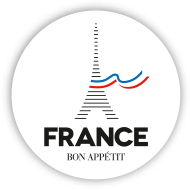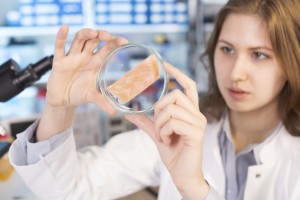
THE FRENCH
FOOD
INDUSTRY'S PORTAL
Webzine
taste it to info

DGAL, guaranteeing food safety in France
News /
Tuesday 15 December 2015
Loïc Evain, associate Managing Director of the French Directorate General for Food (DGAL1) answered Franceagroalimentaire’s questions on key points on France’s approach to food safety, which brings real benefits to the export industry.
What is the DGAL?
Loïc Evain: The DGAL is a government office within the French Ministry of Agriculture which currently employs some 220 people. The DGAL, together with regionally-based offices (DRAAF2) and département-level sub-divisions (DDPP3), is tasked with monitoring the health and safety of animals and plants as well as the safety and quality of any resulting food products.5 It is notably responsible for drafting and implementing legislation governing agricultural and food sector professionals in this area, known generally as food safety. These public authorities intervene at every stage of the food chain, monitor imported produce and govern the official certification of exported products.
What are the key points outlined within the French food safety plan?
LE: Among the major primary principles, I would give particular mention to its unique chain of command. The sub-regional offices or départements responsible for protecting the population, together with the regional ministry of agriculture offices, carry out any directives from central government with a totally unified approach. This chain of command is vital to the overall effectiveness of the system, as an order passed in Paris will be applied in exactly the same way in Belfort or Bresse. Any monitoring in place will therefore be carried in the same way across France. This system is considered as a sign of coherence for professionals and a guarantee of safety for consumers.
Another key point is the highly competent workforce, who undergo specialist post-graduate training courses run by the French Ministry of Agriculture. Specifically, this is known as ENSV for animal health inspectors, ENGREF for agricultural engineers and INFOMA for senior technicians.
With specific regard to exports, are food safety guarantees the same as those in place on French soil?
LE: Any exported foods are at least as safe as the foods sold in France or within Europe. For non-European countries, we are duty-bound to conform to additional, specific stipulations sometimes enforced.
How is French food safety perceived throughout the world?
LE: It is widely reported that European food and agriculture are compliant with the most stringent quality controls in the world. This is clearly evidenced in France’s sanitary and phytosanitary measures, which are considered to be of a high standard in both France and across Europe, which cover foodborne diseases transmitted to humans as well as diseases affecting animals or even plants.
Do you consider health crises to be a catalyst to force us to re-evaluate or revolutionise the systems in place?
LE: Yes, absolutely. The best illustration of this would be the outbreak of mad cow disease (BSE) which enabled us to make considerable headway in sanitary standards in Europe. We have mad cow disease to thank for various food safety agencies being set up in most EU member states. The European Food Safety Authority (EFSA), which is based in Parma, also came to being as a direct result of this crisis. The French Food Safety Agency (AFSSA, now known as ANSES) was created in 1999, and France was a forerunner in creating EU member state agencies and also the General Food Law established in 2002 at European level. By creating these agencies, matters relating to the scientific assessment of sanitary risk is kept entirely separate from any decisions relating to prevention or management strategies. The BSE crisis triggered the introduction of traceability, a term virtually unheard of before the 90s. It now forms an integral part of our everyday language and is not limited to the food sector alone.
The dioxin scandal in 1999, compounded by the BSE crisis, forced the EU to adopt entirely new legislation relating to animal feed. Feed is now closely monitored for microbiological and chemical contamination and product origin. Overall we have made significant progress.
How does the French Food Safety label serve as an advantage in export markets?
LE: When required by importing countries, exported goods are accompanied by a sanitary or phytosanitary certificate, which is an official document issued by a government approved authority. Traceability is also a significant benefit for importers of French produce. If there is a problem with the goods on arrival, the problem can be traced right back to the source. Incidences of French foods being refused on the grounds of non-conformity as they enter ports around the world are extremely rare. France’s approach to food safety, regarded as both exemplary and of high quality, is perceived as a major benefit in commercial dealings. “Made in France” promotes food safety values as well as the taste and overall quality of the goods.
How can we promote the “French Food Safety” label abroad?
LE: Industry professionals and government organisations communicate on food safety. In France we regularly meet and even receive colleagues from non-European countries to which we export food products. To have the necessary authorisation to export to these countries, we actively encourage inspection visits to farms, factories, abattoirs and laboratories. These site inspections build confidence. In 2014, the DGAL hosted some thirty foreign delegations to inspect various sectors of the industry.
We are also involved in publicising our methods, systems and organisations via our educational establishments. By way of an example, two years ago, the ENSV, which is the official specialist college for training veterinary health inspectors, introduced a Summer School. English classes were made available throughout the summer and made available to foreign counterparts. These exchanges are an opportunity to explain and promote our sanitary system. In 2015, some twenty countries were involved in this initiative which was deemed an outright success.
The DGAL – key figures
- Some 4,800 agents
- 14,000 certified veterinary health inspectors
- 30 national laboratories
- 30,000 farm inspection visits
- 80,000 inspections to food production sites
- 90,000 inspections of imported food samples
Notes
- DGAL – Direction Générale de l’Alimentation
- DRAAF – Direction Régionale de l’Alimentation, de l’Agriculture et de la Foret
- DDPP – Direction Départmentale de la Protection des Populations
> To go further :





